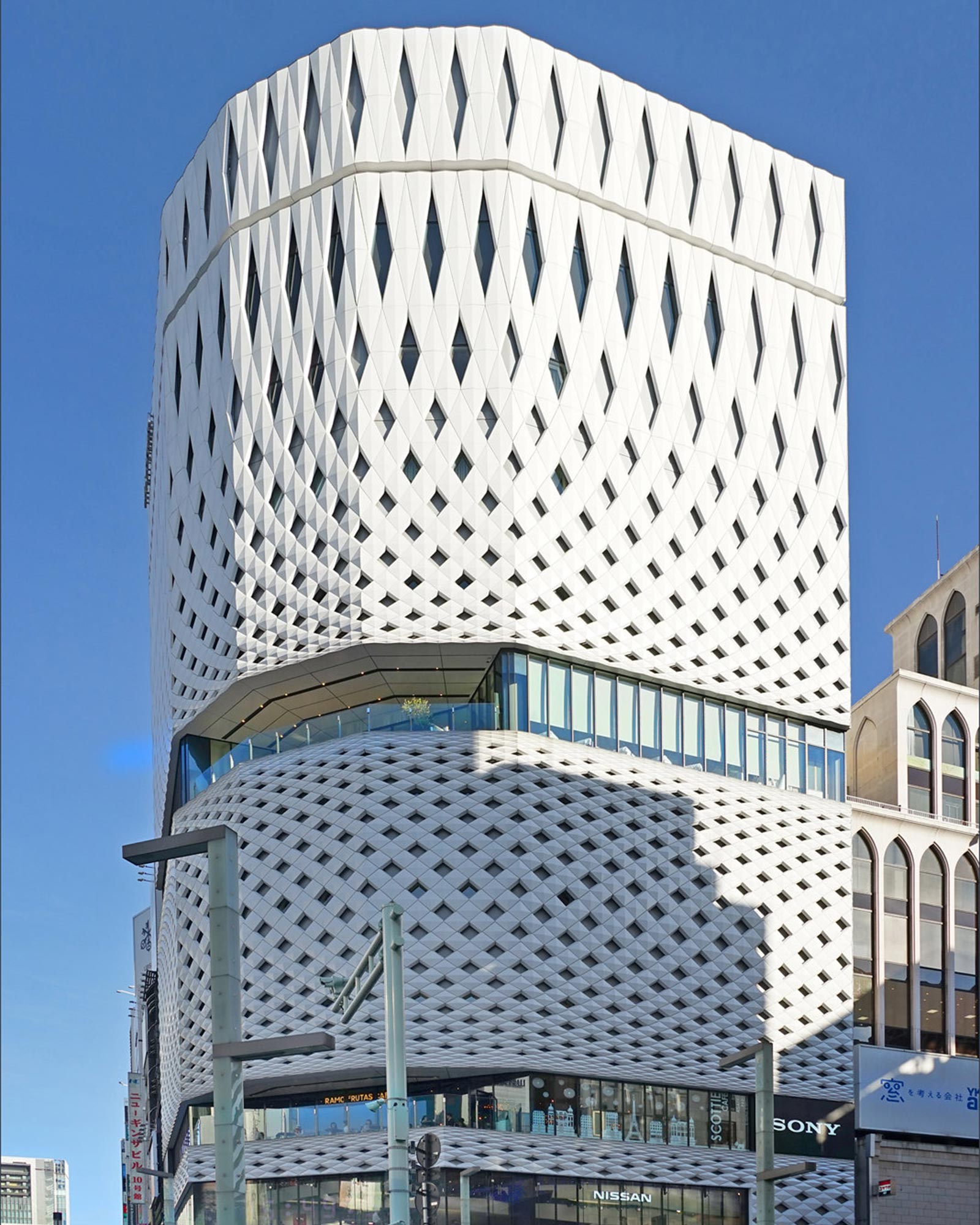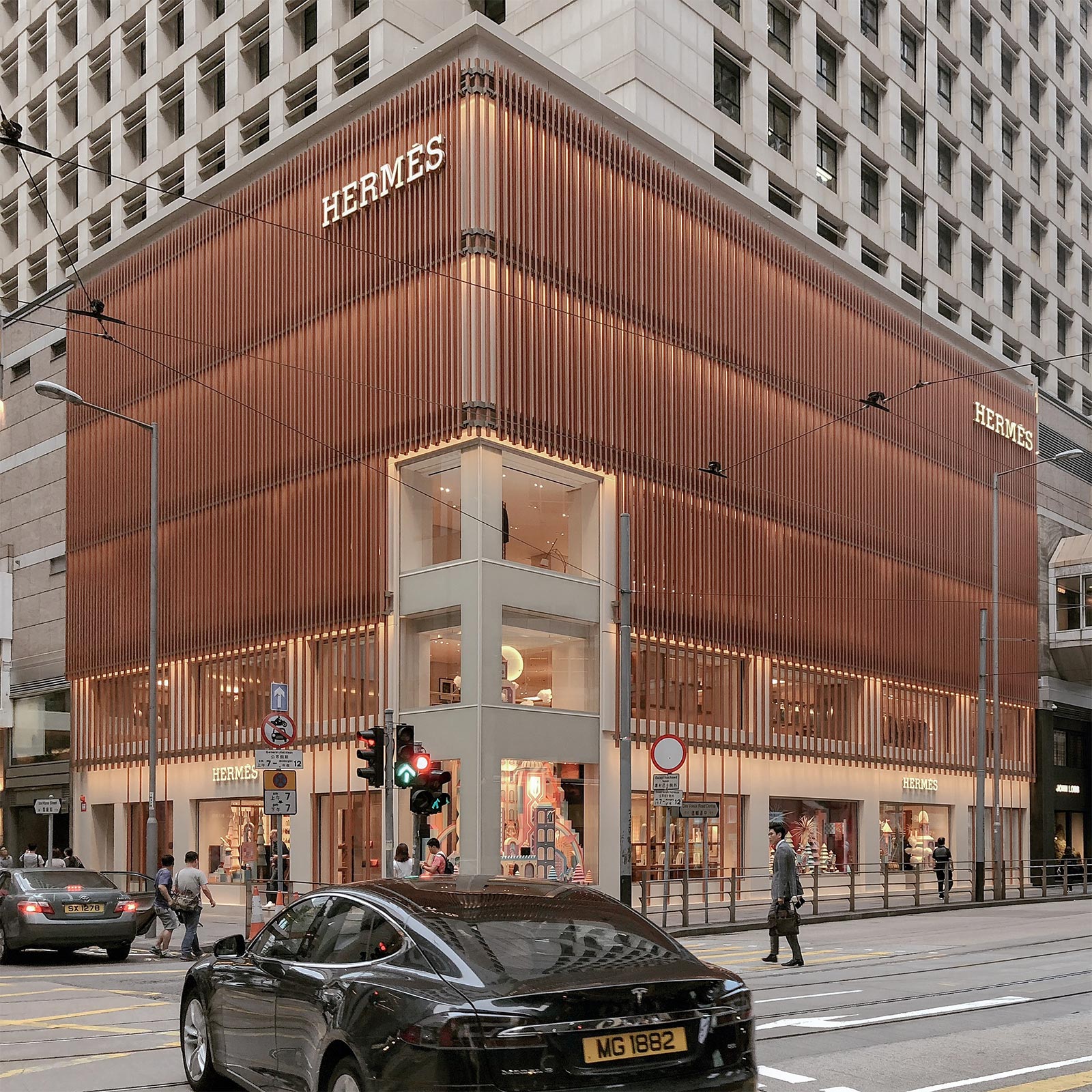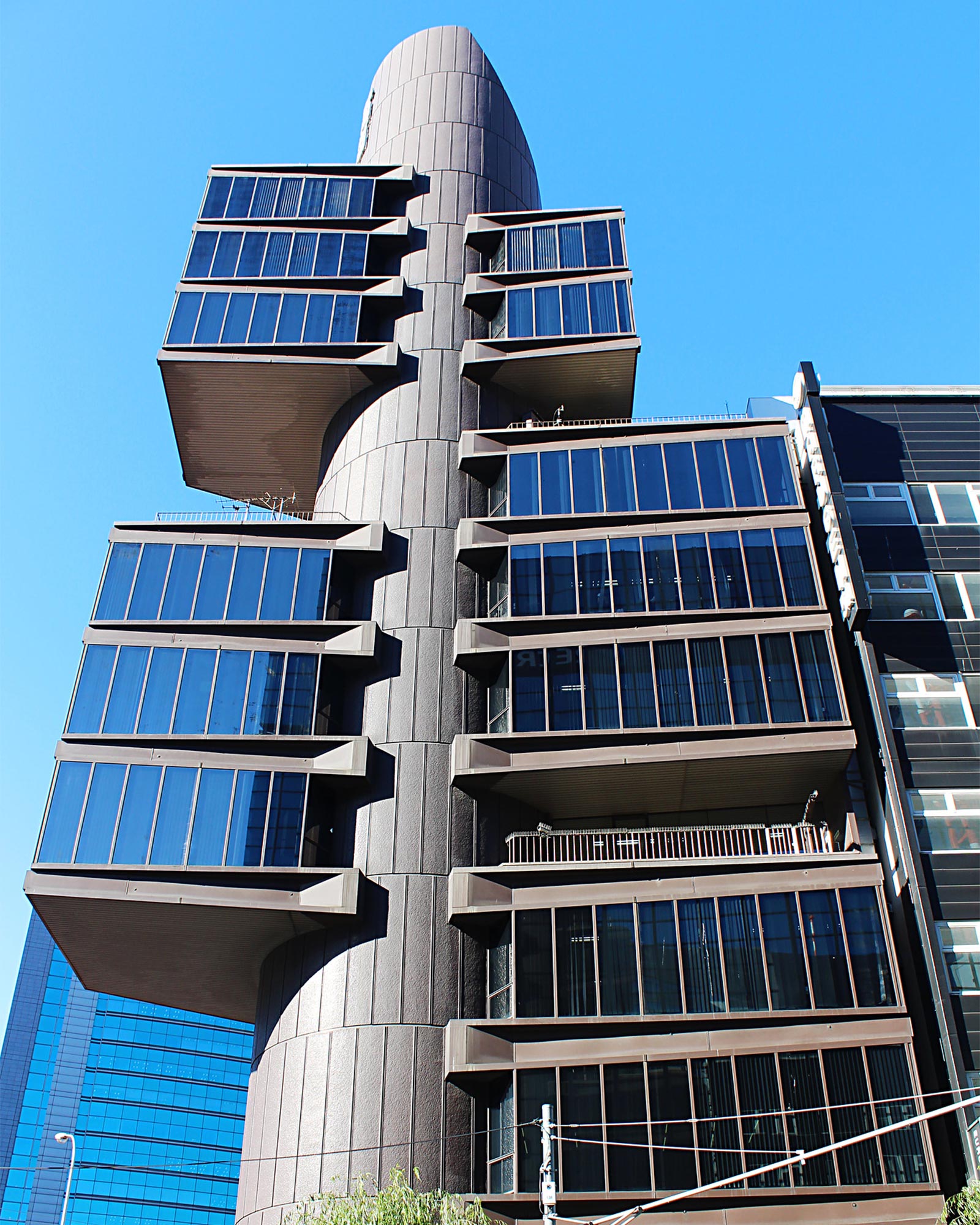Ginza: A Hot Spot for Architecture
Tokyo is a city of eclectic taste when it comes to architecture. While there are naturally many of the ubiquitous glass towers that sprout up in any major city, those skyscrapers hide countless gems of design and aesthetics. You’ll find magnificent examples of architecture all over the city, but the upscale neighborhood of Ginza is the mecca of modernist Tokyo architecture. It centers around a major avenue called Chuo-dori, which some call the 5th Avenue of Tokyo: a broad street lined with high-end fashion stores each trying to outdo one another with impressive displays and buildings. These are a few of Ginza’s most spectacular examples of architecture.

Nissan Crossing
5-chōme-8-1 Ginza, Chuo City, Tokyo 104-0061, Japan
In the center of Ginza, you’ll find Nissan Crossing, a fascinating façade of interwoven latticework and large glass windows with embedded transparent LED lights. On the first and second floors, the building houses Nissan’s showroom, which regularly features anything from exotic concept cars to retro race cars from Nissan’s heyday. The exterior of the building can be photographed from many angles, either up close or from across the street, allowing for a variety of compositions that at first glance may not appear to be of the same subject. The large windows on the ground level also provide a reflective surface perfect for creating abstract images of fashionable Ginza passersby.

Maison Hermès
Chuo City, Tokyo 104-0061
Speaking of glass facades, the Hermes Building is the undisputed king of this feature, with its imposing walls made of large glass blocks that give the impression of a waterfall or solid ice. The simple but impressive structure makes for great photos—whether of its architecture or as a backdrop for your personal photo shoot. Designed by Renzo Piano, the building also features a unique mobile sculpture on its exterior. This dynamic work of art spans the entire height of the ten-story building, and it moves and turns in the wind, casting beams of light with its reflective surfaces.

Nakagin Capsule Tower
8-chōme-16-10 Ginza, Chuo City, Tokyo 104-0061, Japan
Among all the feats of modern design, however, the real architectural jewel of Ginza is the Nakagin Capsule Tower. Designed by Kisho Kurokawa and built in 1972, it is the quintessential example of the Metabolism architecture movement, which in the optimistic and prosperous post-war years aimed to combine natural growth with urban structures: the capsules that bubble out from the tower’s core were meant to be replaceable, allowing the building to evolve over its lifetime. However, that never happened, and since the capsules were not built to last, the building has fallen into disrepair. Its immediate future is highly uncertain, and its days may be numbered.

Shizuoka Press Building
Chuo City, Tokyo 104-0061
Hidden on the edge of Ginza is another example of Metabolist architecture. A short walk from Chuo-dori, the Shizuoka Press Building was designed by famous Japanese architect Kenzo Tange. The building’s unique shape, resembling the ‘sail’ on top of most submarines, gave it the nickname “submarine tower.” Though the building is still in use, its interior is not open to visitors. However, it does offer interesting photographic options, particularly its reflection in the glass facades of neighboring buildings.

Tokyo International Forum
Chiyoda City, Tokyo 100-0005
Last but not least, and easily the best playground for architecture and street photographers, is the Tokyo International Forum in Yurakucho. This magnificent structure, built in 1997 on the site of the old Tokyo City Hall, is a convention and event space. The entire complex allows for fascinating compositions and endless exploration. The crown jewel of the forum is the main entrance lobby, a sprawling atrium with a seemingly inverted vaulted ceiling reminiscent of a whale skeleton or Viking longship. The space is open to the public and can be explored on all seven of its levels, allowing for a plethora of views and photographic angles. As the roof and one side of the building are mostly made of glass, the space also changes dramatically depending on the lighting conditions. It’s a good idea to visit the Forum on a few different occasions to experience all it has to offer visually.
Some of these incredible buildings are beautiful to behold, while others are thought-provoking and require more context to get the full effect. Our experts and photographers at EYExplore are passionate about the urban architecture of Tokyo and love to share the stories and structures through the lens of a local with our photo adventures.
{$section.placeName}
{$section.address}
{$section.addressNotes}
{$section.description}